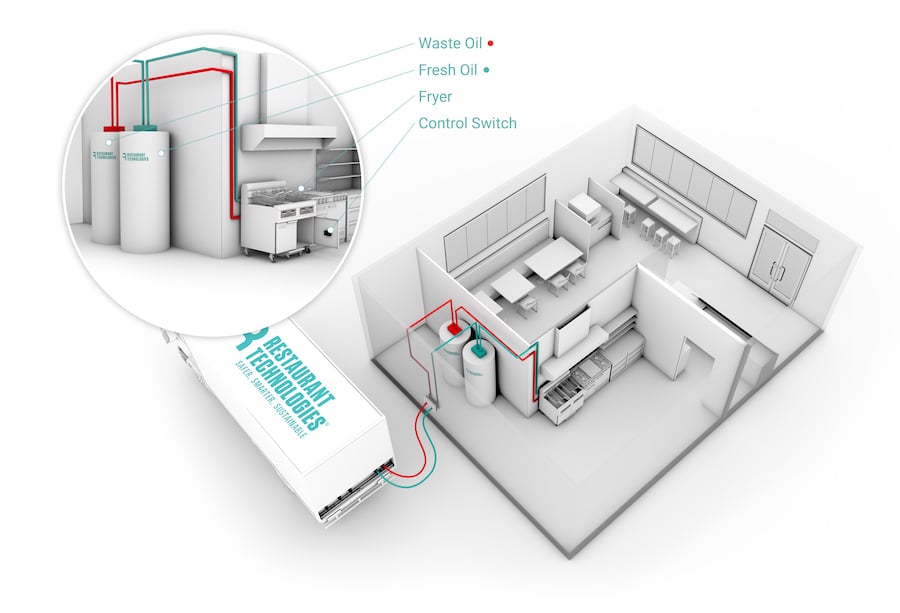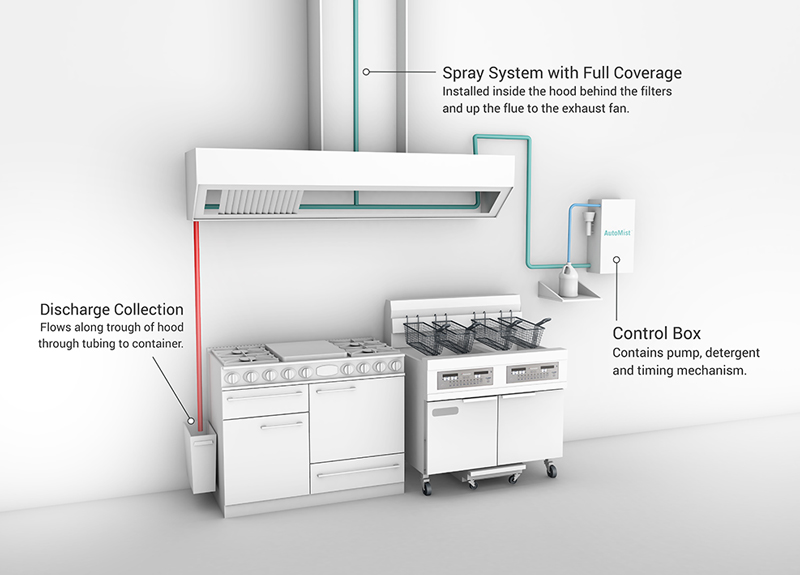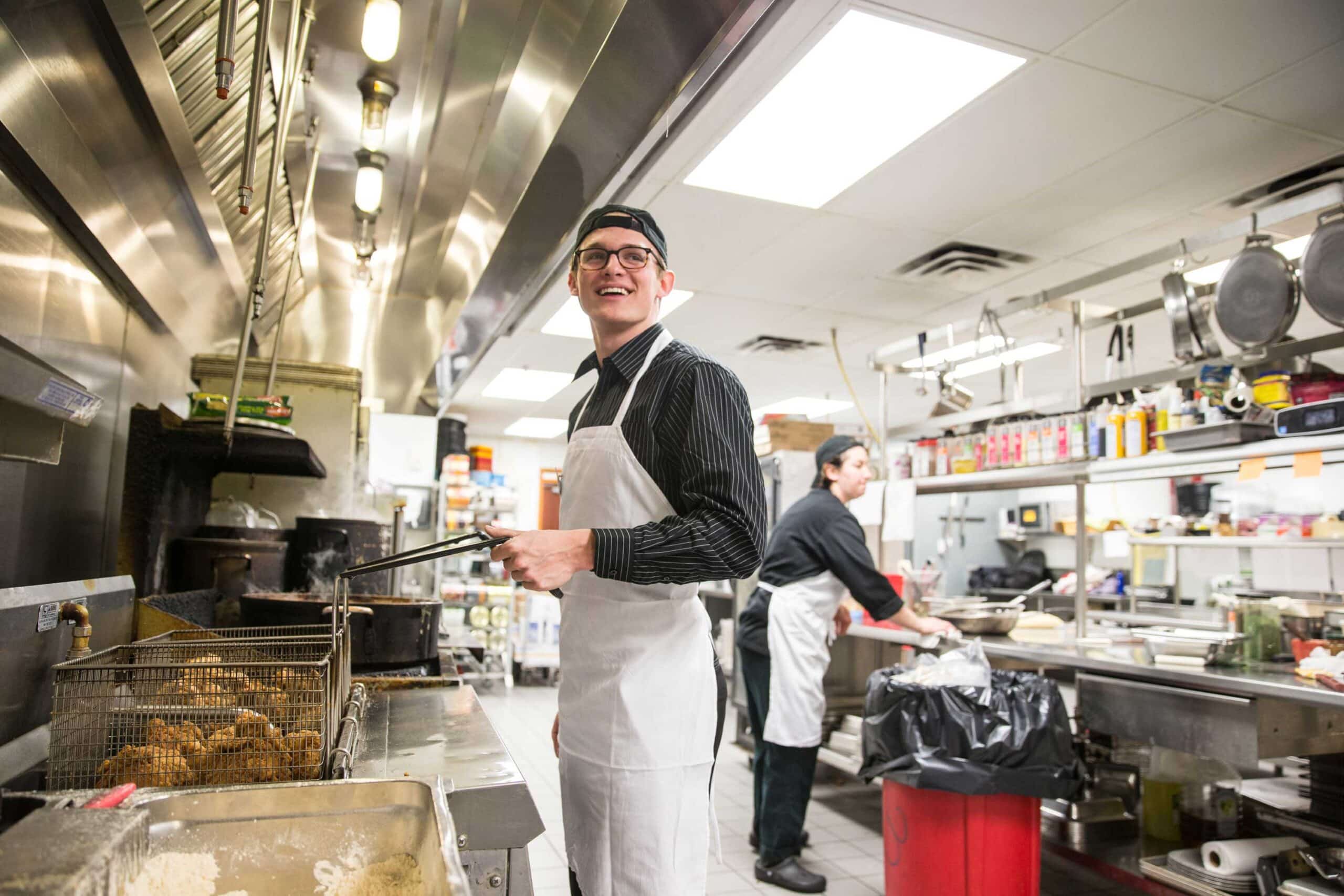Grease is good. It’s true! Why? Because it’s a sign that your kitchen is busy and productive. But grease accumulates quickly, and it can dramatically increase your risk of fire. Here are the important things to know about how to reduce grease in your commercial kitchen:
What’s the Difference Between “Oil” and “Grease”?
Although sometimes used interchangeably, when we say “oil,” we’re referring to fresh cooking oil. When we say “grease,” we’re talking about used cooking oil — or, more accurately, what the cooking oil becomes after it’s been used to cook fried food. Grease (also sometimes called “yellow grease”) is thicker than fresh cooking oil. Grease and oil also look, smell, and taste significantly different. So what happens during the cooking process to turn oil into grease?
How Does Oil Turn into Grease?
As oil in your deep fryer is exposed to ongoing heat, it goes through three main chemical changes:
- Hydrolysis: You’ve likely noticed steam rise from your deep fryer. It happens mostly at the beginning of the process, as the food releases water when it begins to cook. The presence of heat plus water sets off hydrolysis, which produces glycerols and free fatty acids.
- Oxidation: When oil breaks down, it begins to oxidize, which causes certain molecules to become unstable. Much of the nutritional value from fatty acids is lost during this process, and harmful compounds like free radicals are released. This is also when the taste of oil starts to turn slightly bitter.
- Polymerization: When oil undergoes polymerization, it’s ready to be replaced. Significant changes to taste, color, and viscosity occur as the oil rapidly breaks down and harmful compounds are released. In many cases, when fried food is described as “greasy,” it’s been cooked in oil that has gone through the polymerization process.
Eliminate Grease In and Around Your Dining Area
Since grease spreads in steam and vapor particles, it can get anywhere. If you have to periodically clean your kitchen walls because they start to accumulate grease, it’s a good idea to do the same thing in your dining area too. Grease really can get anywhere, and it’s important to eliminate it from the customer experience as much as possible. Eating engages all five of the senses — not just taste and smell. If the tables, walls, chairs, or laminated menus feel even a bit greasy, it can easily create a negative experience for your guests.
Save on Your Insurance Premiums.
Get end-to-end cooking oil management & clean hood solutions to help you create a safer, more successful business.
Never Pour Grease Down the Sink
Anytime you dispose of grease properly — in a sealed container in the garbage, for example, or via a grease disposal system — the grease is taken away from your kitchen. Whereas when grease gets disposed of down the drain, some amount of it cools and remains in the kitchen’s drain system. There’s never a good reason to pour grease down the drain. It can cause costly, disruptive plumbing issues in your kitchen.

Total Oil Management Makes Kitchens Cleaner and Safer
Manual oil management involves disposing and filtering oil by hand, which is a messy job that can easily lead to spills and splatters. This spillage can easily go unnoticed in a busy kitchen, which means that it remains there as a potential slip hazard. With Total Oil Management, these tasks are fast, simple, and safe. With disposal and filtering as easy as pushing a button, your risk of spills and splatters plummets.
This goes a long way toward reducing grease in your kitchen. Not only that, Total Oil Management eliminates grease packaging and containers that would otherwise clutter up your kitchen space. It’s all stored in a tank outside, and when it’s time, you press a button and the oil passes through the system and refills your fryer automatically. That means there’s no risk of oil spillage or splattering, which reduces grease, and ultimately makes your kitchen safer.

Automatic Hood Cleaning with AutoMist®
What if every day when you showed up to your kitchen, your exhaust hood was squeaky clean? That’s the reality for kitchens across the country that have made the choice to automate hood cleanings with AutoMist. AutoMist is Restaurant Technologies’ hood cleaning solution that virtually eliminates grease. AutoMist is installed in your exhaust system — from the hood and up the flue to the fan — to ensure total coverage. The pump automatically engages, regularly spraying a powerful water and detergent mixture throughout, dissolving any grease that’s present.
This not only dramatically lowers your fire risk — it also ensures that your exhaust system is always working optimally, so it can draw in more airborne grease particles, which reduces grease everywhere else in your kitchen.
Sources:
- How Many Times Can I Reuse Fry Oil?
- Chemistry of Deep‐Fat Frying Oils – Choe – 2007 – Journal of Food Science – Wiley Online Library
